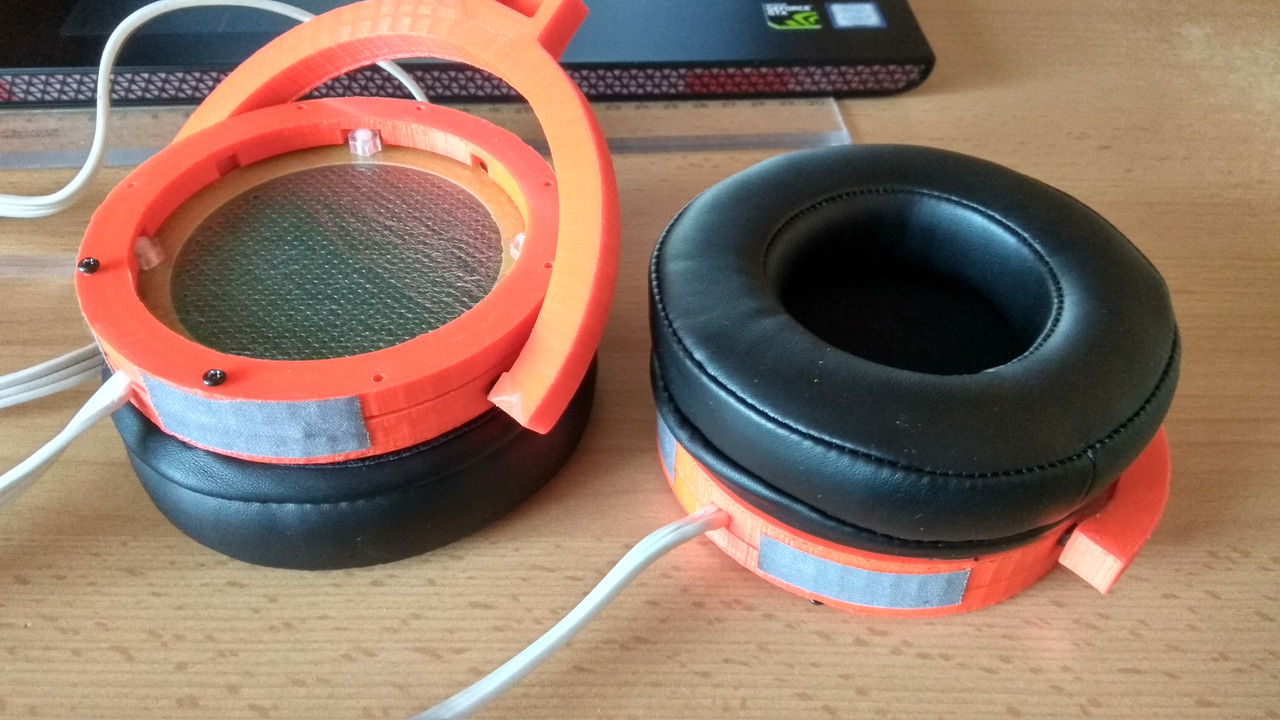The performance of stators is a wonderfully complex field with boundaries imposed on transmission by thickness of the plates, percentage of open area though the plates, and distance between the holes These three boundary parameters interact to generate
1. Resonances analogous to the transmission variations in a Fabry–Pérot optical interferometer, improved by decreasing the spacing between the diaphragm and the stator - which has severe limits, obviously.
2. Exaggeration [spreading] of the resonant effects by coupling between the air-masses of the closely spaced tubes and by interaction between the hole-end effects on inner and outer stator surfaces, improved by moving the holes apart - but then no sound gets through, and by making the plates thin - but thin enough means the plates cannot support themselves, which is bad, and become self-resonant, which is bad also.
3. Diffraction effects, where sound from each element of area traveling outwards through a directly facing hole is interfered with by sound that has travelled from the same element via the holes surrounding the primary hole and arrives with slight delays and subtracts or adds to the output of the main hole depending on frequency - It's a complex two dimensional comb-filter system and messes with the HF end.
The best-case combination of all these parameters is actually a very thin plate with a large proportion of open area generated by very large numbers of small holes that are very close to each other - screen-printing wire mesh is absolutely ideal acoustically but it has no mechanical strength. The mechanical issue of fixing such a stator in space is a problem that has been addressed in the Hifiman Shangri-La [actually it's quite a crude version of the mesh], so it can be done. The standard argument about lots of holes diminishing field strength is a red-herring with fine wire mesh - look at the protective guards round ultra-HV test facilities, the artificial lightning doesn't get through even though the mesh is high open area.
So, to focus on your idea, thin aluminium plates are a valid way to go - thin is good - but keeping them flat is an issue - it's dealt with in the Stax SR009 by bonding the thin plates to a thick but substantially open spider of the same metal, and is one approach I'm taking - incidentally, I'm amused by a number of 009-style designs in this forum that omit holes where the 009 has ribs - the ribs aren't there to block holes, they're there to reinforce the plates; in plates that do not need to be reinforced the rib positions should be filled with holes!! The possibility that the blank areas are used to control diaphragm resonances, which some may have thought, is certainly not true in the case of the 009 where the spider layout is symmetrical and would tend to favour some higher order resonances if such a mechanism were at work.
Ed Form

































